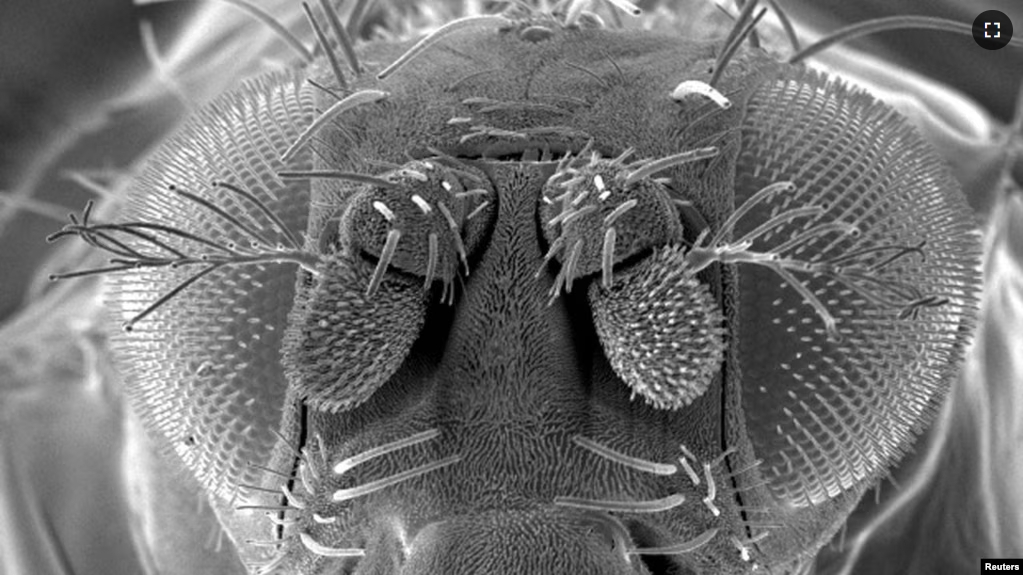A group of international scientists recently announced they had made a map of the whole “brain” of an adult fruit fly.
They said the milestone would provide new knowledge about the brains of all animals including humans.
The research gives details of more than 50 million connections between 139,000 neurons, which are nerve cells in the brain of the fruit fly.
The scientific name of the animal is Drosophila melanogaster. It is often used in scientific experiments, especially studies of nerve cells.
The researchers wanted to find out exactly how the brain cells operate when they are healthy and normal.
Sebastian Seung was one of the leaders of the research, which was published as a series of studies in Nature. Seung is a professor at Princeton University in New Jersey. He said, “You might be asking why we should care about the brain of a fruit fly. My simple answer is that if we can truly understand how any brain functions, it’s bound to tell us something about all brains.”
The brain of a fruit fly is small — less than one millimeter wide. But some scientists are very interested in them. “It’s beautiful,” said Cambridge researcher Gregory Jefferis.

What the map showed
The researchers created what they called a “wiring diagram” of an adult fruit fly. It is also called a “connectome” map. The goal was to create a map that shows how neurons connect to one another and how they operate.
Similar research has been done with simpler forms of life. For example, scientists have mapped the “brain” of a worm called Caenorhabditis elegans. They have also mapped the neural material of the larval form of the fruit fly. But the adult fruit fly was more complex. The idea was to link the neural connections to the behavior of the animal.
Mala Murthy was another co-leader of the research from Princeton. Murthy said, “One of the major questions we’re addressing is how the wiring in the brain, its neurons and connections, can give rise to animal behavior.”
One of the studies in the series examined the brain circuits involved in walking. It discovered how flies halt. Another studied the fly’s network of neurons associated with tasting and also grooming circuits. These circuits are behind the behavior in which a fly uses its leg to remove dirt from antennae on its head.
One of the studies examined how a fly processes motion and color information. And still another looked closely at how parts of the fly’s brain were connected. That study discovered that a large group of neurons called “hub neurons” might help speed up the flow of information.
The researchers created the map by following how both sides of the brain were organized and linked the circuits they identified to behaviors. They also identified classes of cells in the fly’s brain and examined the chemical connections between neurons known as synapses.
The international collaboration of scientists called FlyWire Consortium carried out the research.
I’m Mario Ritter, Jr.
Will Dunham reported this story for Reuters. Mario Ritter, Jr. adapted it for VOA Learning English.
________________________________________________
Words in This Story
milestone –n. a sign that a major goal has been reached
function –n. to purpose for something and the job that it does
diagram –n. a simplified picture that shows how something works
give rise to –v. (phrasal) to cause; to bring about
circuit –n. a complete path by which electricity travels away from and returns to its source
antenna (antennae pl.) –n. the long structures attached to the heads of insects that help them feel and sense
